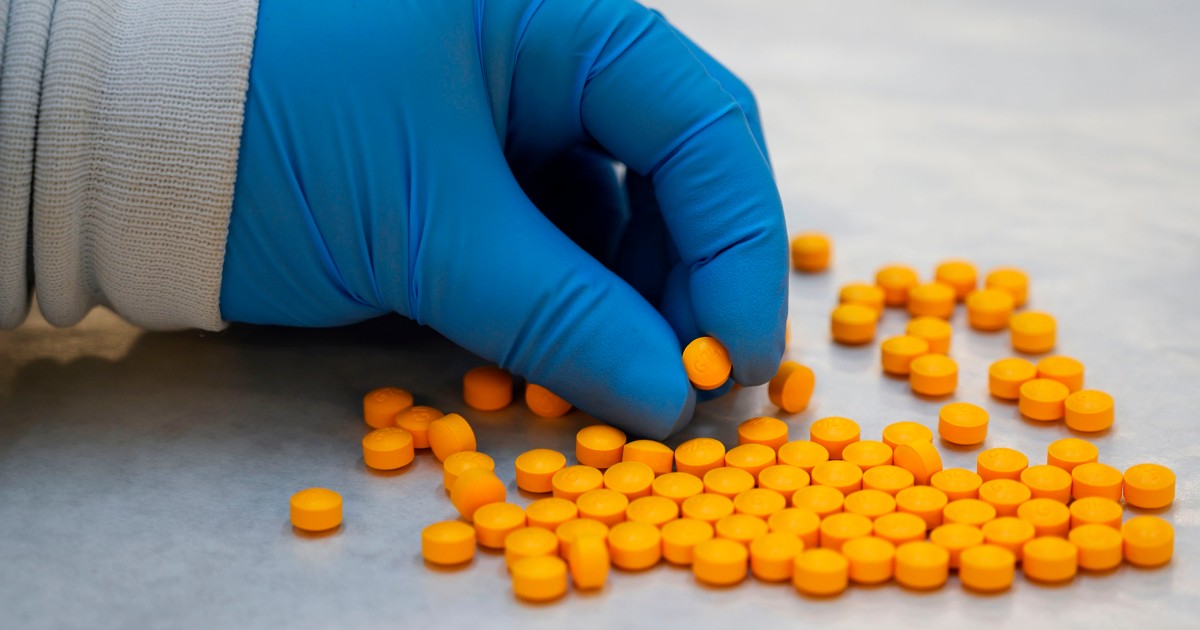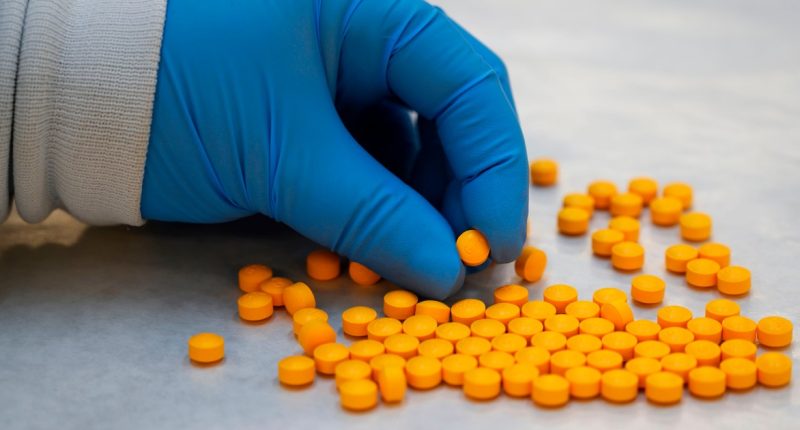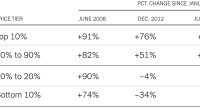
The U.S. is in the throes of what researchers have deemed a “fourth wave” of the opioid crisis, a phase characterized by overdose deaths caused by the combination of stimulants and the powerful synthetic opioid fentanyl.
Overdose deaths in the U.S. surpassed 100,000 for the first time in 2021, fueled by the rise of synthetic opioids, which accounted for 75% of those deaths. Once propelled by prescription opioids and then heroin, the decadeslong crisis was overwhelmed by synthetic opioids in the mid-2010s.
Now it has taken on a new challenge: so-called polysubstance overdoses, which include more than one drug.
The proportion of overdoses involving fentanyl and a stimulant — most commonly cocaine and methamphetamine — increased more than fiftyfold from 2010 to 2021, a study published Thursday in the journal Addiction found.
“The roots really did start with overprescribing prescription opioids, but now it is really characterized by stimulants and fentanyl,” said Chelsea Shover, an assistant professor-in-residence at the David Geffen School of Medicine at UCLA, who co-authored the study.
Shover and her team looked at death certificate data from all overdose deaths in the U.S. from 2010 to 2021. In 2010, just over half a percent of fentanyl overdose deaths, those of 235 people, involved stimulants. By 2021, nearly one-third of all fentanyl overdose deaths — those of more than 34,000 people — involved stimulants.
What stimulant was combined with fentanyl changed based on where people lived, the study found. By 2021, nearly all fentanyl-plus-stimulant overdoses in the Northeast involved cocaine. In the West and most of the Midwest, it was methamphetamine.
The trend began to take shape in 2015, when stimulants’ involvement in fentanyl overdoses began to rise in virtually every state, starting what the researchers call the “fourth wave of the opioid epidemic.”
“It’s a moving target in the sense that the profile of what drugs or drug combinations are causing the most deaths has shifted every couple years in recent years,” Shover said.
A proportion of the fentanyl-plus-stimulant overdoses may be due to the fact that fentanyl has now been found, often unexpectedly, in virtually every other type of illicit drug.
Shover thinks that in the majority of cases, the combined use was intentional. People have long combined stimulants and opioids, creating so-called speedballs of cocaine and heroin or goofballs of methamphetamine and heroin.
“But it’s hard to tell with data, because you can’t interview the data. And it’s rare you have an actual substance that you can test,” she said.
In the study, autopsy reports for people whose deaths were attributed to polysubstance overdoses noted significant amounts of both stimulants and fentanyl in their systems, but the data did not show whether the drugs were taken together or at different times.
“It doesn’t distinguish between someone who used methamphetamine or cocaine in the morning and fentanyl in the afternoon and those who used them together and then overdosed,” Shover said.
‘A very dark tone’
Given the long trend of combining opioids and stimulants, “when fentanyl started to sweep the nation, it was ripe for combination,” said Anna Childress, an adjunct professor of psychiatry at the University of Pennsylvania Perelman School of Medicine, who studies addiction medicine. Childress was not involved in the new study.
The difference now is that fentanyl is roughly 50 times more potent than heroin.
“The whole picture takes on a very dark tone,” Childress said. “A little bit of fentanyl can easily kill someone who is primarily a stimulant user. Even people who are primary opioid users are dying left and right of fentanyl overdoses.”
Fentanyl is a quick high, and combining it with a stimulant can extend feelings of euphoria, another reason people might intentionally use them together. Stimulants and opioids also have opposite effects on the body, which can lead people to use one to counteract the effects of the other, said Magdalena Cerdá, the director of the Center for Opioid Epidemiology and Policy at the NYU Grossman School of Medicine in New York City.
“We do have effective medications to treat opioid use disorder, but that’s not so much the case with stimulants,” she said.
Narcan nasal spray, which can reverse an opioid overdose, became available over the counter this month. Methadone and buprenorphine are prescription treatments for opioid use disorder. But similar drugs do not exist for stimulants, making the combination more difficult to address than opioids alone.
One proven treatment for stimulant use disorder is called contingency management. The type of therapy awards small monetary incentives for making healthier choices — in this case, not using cocaine or methamphetamine. California introduced a pilot program for stimulant users last year, but the therapy is still “politically controversial,” Shover said.
“You’re paying people who use drugs, but it works well as far as treatment for stimulant disorder, and it’s one of the cheaper options,” she said.
Childress is part of a clinical trial testing whether an existing antipsychotic medication called cariprazine may also be able to curb stimulant cravings in people who use the drugs. Animal studies showed promise, and a clinical trial in humans, which includes people who both have opioid use disorder and use stimulants, is under review.
Researchers are trying to get a clearer picture of how the evolving overdose crisis is playing out across the country. This grasp will help public health experts better implement the best substance use disorder treatments and overdose prevention tools as things evolve.
Health officials started this year to warn of fentanyl laced with the animal tranquilizer xylazine — a combination dubbed “tranq dope.” The Biden administration in July announced a plan to reduce deaths from the drug combination.
Still, “the predominant drug involved in overdoses is still fentanyl,” Cerdá said. “Even though it’s combined with other things, it’s still very much an opioid-driven overdose problem.”
Follow NBC HEALTH on Twitter & Facebook.
Source: | This article originally belongs to Nbcnews.com










